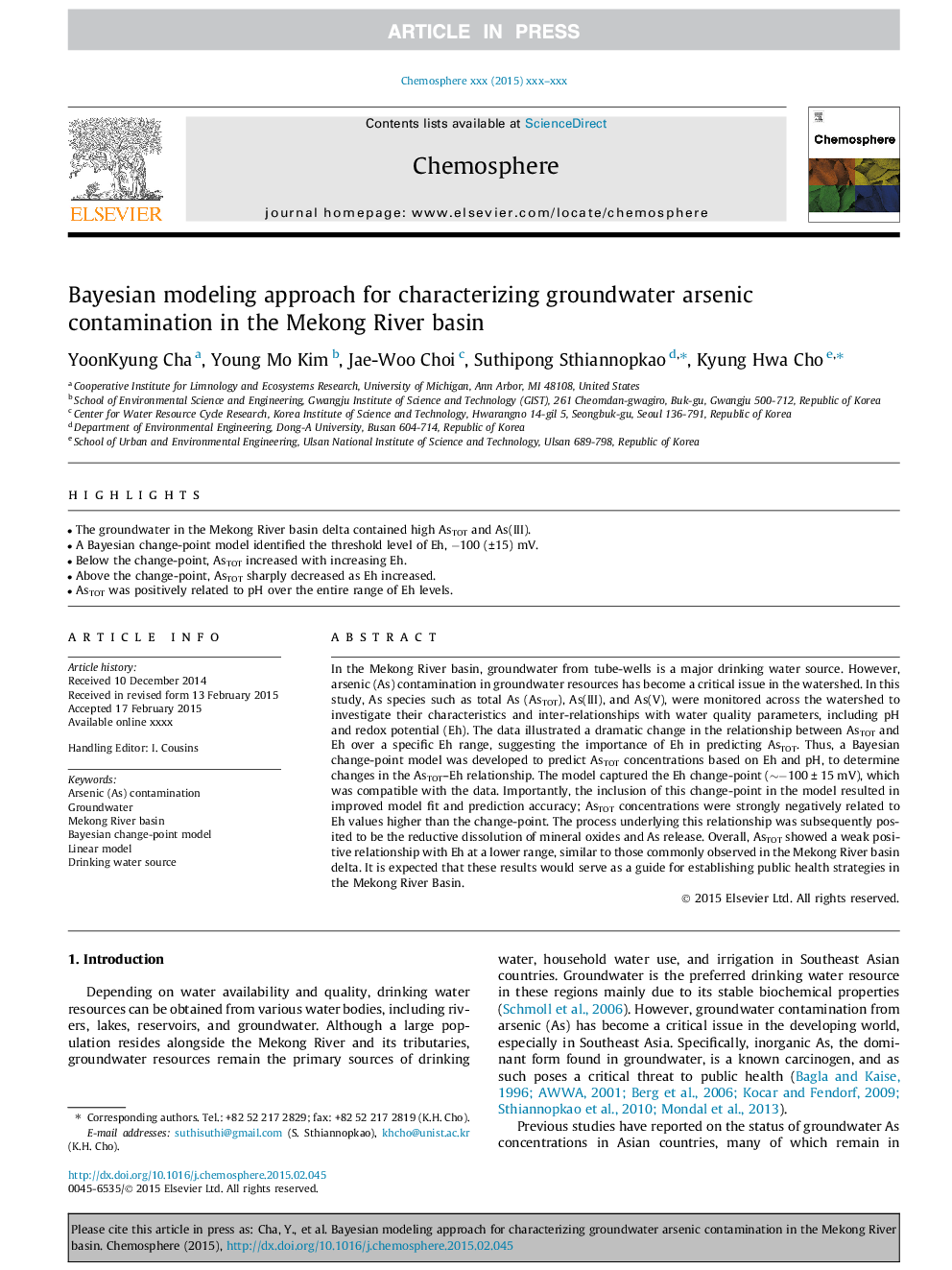| کد مقاله | کد نشریه | سال انتشار | مقاله انگلیسی | نسخه تمام متن |
|---|---|---|---|---|
| 6307212 | 1618828 | 2016 | 7 صفحه PDF | دانلود رایگان |
عنوان انگلیسی مقاله ISI
Bayesian modeling approach for characterizing groundwater arsenic contamination in the Mekong River basin
ترجمه فارسی عنوان
رویکرد مدل سازی بیزی برای توصیف آلودگی آرسنیک آب زیرزمینی در حوضه رودخانه مکونگ
دانلود مقاله + سفارش ترجمه
دانلود مقاله ISI انگلیسی
رایگان برای ایرانیان
کلمات کلیدی
موضوعات مرتبط
علوم زیستی و بیوفناوری
علوم محیط زیست
شیمی زیست محیطی
چکیده انگلیسی
In the Mekong River basin, groundwater from tube-wells is a major drinking water source. However, arsenic (As) contamination in groundwater resources has become a critical issue in the watershed. In this study, As species such as total As (AsTOT), As(III), and As(V), were monitored across the watershed to investigate their characteristics and inter-relationships with water quality parameters, including pH and redox potential (Eh). The data illustrated a dramatic change in the relationship between AsTOT and Eh over a specific Eh range, suggesting the importance of Eh in predicting AsTOT. Thus, a Bayesian change-point model was developed to predict AsTOT concentrations based on Eh and pH, to determine changes in the AsTOT-Eh relationship. The model captured the Eh change-point (â¼â100 ± 15 mV), which was compatible with the data. Importantly, the inclusion of this change-point in the model resulted in improved model fit and prediction accuracy; AsTOT concentrations were strongly negatively related to Eh values higher than the change-point. The process underlying this relationship was subsequently posited to be the reductive dissolution of mineral oxides and As release. Overall, AsTOT showed a weak positive relationship with Eh at a lower range, similar to those commonly observed in the Mekong River basin delta. It is expected that these results would serve as a guide for establishing public health strategies in the Mekong River Basin.
ناشر
Database: Elsevier - ScienceDirect (ساینس دایرکت)
Journal: Chemosphere - Volume 143, January 2016, Pages 50-56
Journal: Chemosphere - Volume 143, January 2016, Pages 50-56
نویسندگان
YoonKyung Cha, Young Mo Kim, Jae-Woo Choi, Suthipong Sthiannopkao, Kyung Hwa Cho,
